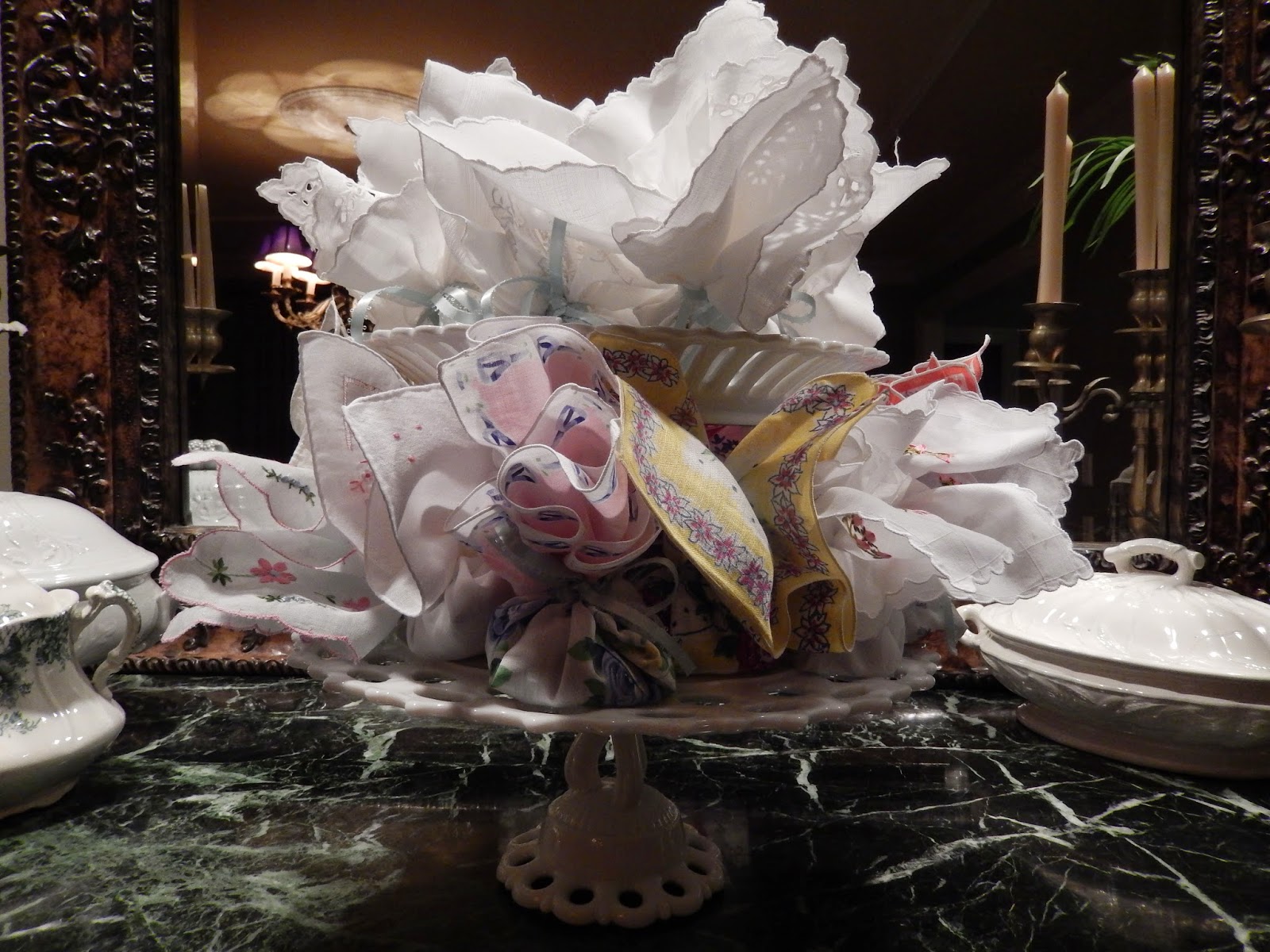
These beauties tend to be fragile, however, and I sometimes find upon close examination a small flaw - a pinhole, ink spot, or unraveling hem. What to do with these? Repurpose them, of course!
One good use is to make a herbal sachet - these smell so great in a clothing dresser drawer, a stored evening purse, even in your car. I made these with lavender buds, but you could also do this with any aromatic herb, cedar clippings, rose petals... And they are easy to make, as you will see.....
Next, place a few drops of aromatic oil on a cotton ball or something similar and place on top of the tissue. I used these cosmetic puffs, which are circular and work well in the puffy shape of the sachet. I used this organic lavender oil for my sachets - and this small bottle will be enough to make at least a thousand of them.
Finally, tie the hankie up with ribbon (odds and ends work well for this) or lace and you are done!
And the best part of this is - you can open the sachet back up and replenish the aromatic oil when it starts to wear out. Or take the whole thing apart if you chose, and the handkerchief can be used for another purpose - like these sweet window treatments.
I made a few dozen of these sachets for a promotion at Stone House, and offered one free to each customer who purchased my linens. The top row was made with vintage tea napkins that were imperfect; the bottom layer was made with vintage handkerchiefs. They were gone in a matter of days, but in the mean time, the shop smelled GREAT.






































